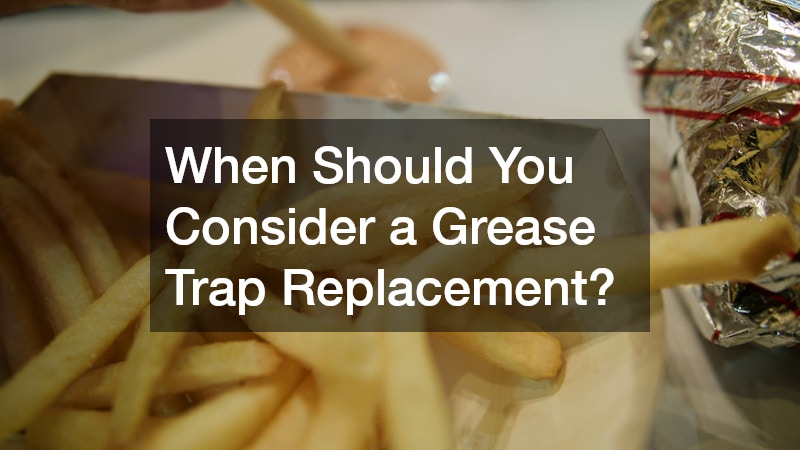
Grease traps are essential components for restaurants and commercial kitchens that help prevent grease and fats from entering the wastewater system. Over time, these traps can become ineffective, leading to costly plumbing issues and environmental hazards. Understanding when to consider a grease trap replacement is crucial for maintaining smooth operations and regulatory compliance in food establishments. In this article, we will discuss key indicators that suggest it's time for a replacement, potential issues arising from a malfunctioning trap, and the benefits of timely replacements. Recognizing the signs and understanding the importance of grease trap replacements is vital for any food service business.
One of the first indicators that a grease trap replacement is necessary is the visible accumulation of grease or waste, which can be problematic for everyday operations. If routine maintenance is no longer effective in keeping the trap clear, it may signal that the trap has reached the end of its functional life.
Video Source
Additionally, frequent backups and clogs in the plumbing can signify that the trap is failing to perform its primary duty. Such plumbing issues can lead to unpleasant odors, unsanitary conditions, and potential fines from health inspectors. Ultimately, if your grease trap is consistently causing trouble, it may be time to consider a replacement.
Another sign to watch for is the age of your grease trap. If your trap has not been replaced for over five to ten years, it could be nearing the end of its lifespan. Grease traps are not designed to last indefinitely, and as materials age, their efficiency diminishes. Manufacturers often suggest replacement after a certain period to ensure operational standards and compliance with local regulations. Therefore, if your trap is old and struggling to manage grease effectively, a grease trap replacement is likely warranted.
One major issue that arises from a malfunctioning grease trap is the risk of plumbing clogs. When grease builds up in the trap, it can create blockages in your sewage system, leading to costly repairs and downtime for your kitchen. Not only can this disrupt your operations, but it can also create a serious mess that requires immediate attention. The longer you delay addressing these clogs, the more severe the damage can become, resulting in both operational and financial impacts. As a result, investing in a grease trap replacement can prevent such overwhelming issues from occurring.
Furthermore, a malfunctioning grease trap can lead to environmental hazards, as untreated grease can spill into the municipal sewer system. This situation can have dire consequences, such as fines from local authorities or even legal action against your establishment. Environmental regulations are becoming increasingly strict, and failure to adhere to these regulations can harm both your business's reputation and sustainability efforts. Grease traps are designed to mitigate environmental impact, and neglecting their functionality can lead to more significant environmental problems. Thus, timely replacements are essential to stay compliant and environmentally responsible.
Timely grease trap replacements provide numerous benefits, the most significant of which is enhanced operational efficiency. By ensuring that your grease trap is functioning optimally, you will minimize the chances of plumbing backups and reduce the frequency of costly repairs. A newer grease trap will be more effective at separating fats and oils, keeping your kitchen's plumbing system in good condition. This translates to fewer interruptions in your cooking and serving processes, allowing for better service to your customers. Overall, investing in a grease trap replacement can greatly enhance your kitchen's efficiency.
Moreover, replacing an old grease trap ensures compliance with local health and environmental regulations. Food service businesses are held to high standards, and operating with an outdated or malfunctioning grease trap can lead to legal issues and fines. By proactively replacing aged traps, you demonstrate a commitment to environmental stewardship and the health of your patrons. Staying compliant not only protects your business but also enhances your reputation in the community. A clean and compliant kitchen will attract more customers and boost staff morale.
Finally, a grease trap replacement can help you save money in the long run. While the upfront cost of replacing the trap may seem significant, the savings on repairs and compliance penalties will surpass this initial investment. Additionally, newer models are often designed to be more energy-efficient and easier to maintain than older traps. Improved efficiency can lead to lower operating costs and extend the life of your plumbing systems. Therefore, considering a grease trap replacement is a wise decision for both financial and operational reasons.
